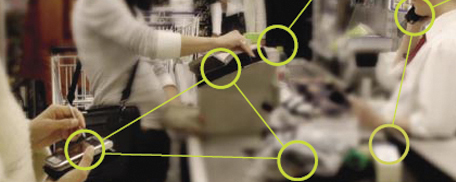Palpable computing at CHItaly 2007
Designing for palpability, 29th of June at 15.30
CHItaly 2007
28-30 June, Padua - Italy
The notion of ambient computing was introduced by Mark Weiser in his seminal paper “The Computer for the 21st Century” published in Scientific American, 1991.
To illustrate his vision Weiser used examples of technologies which had been developed from visibility to invisibility, among these the vanishing of electric motors into an automobile or a factory.
However whilst invisibility may be desirable for a friendly use of technology, it often gives us no easy way of understanding and checking the extent of a malfunction or possible measures to remedy an error situation. The same stands for construction and deconstruction of assemblies of technologies. If technologies could be easily assembled to allow end-user composition, this could be a unique opportunity for the users to create and configure personal settings serving different purposes.
Palpable Computing represents an emerging conceptual framework that attempts to investigate the different phenomena that are inherent in the way computation is manifested and handled in complex, socio-technical systems. The Palpable computing approach reflects on key challenges in ambient computing including invisibility complemented by visibility, construction complemented by deconstruction and sense-making and system automation complemented by user control. In fact, palpable means both tangible, perceivable through the senses, but also, clear, intuitive and noticeable. The co-existence of these meanings addresses the objective of palpable computing, which seeks material modalities in which computation can support the needs of dynamic contexts (e.g. a major incident scenario).
Tentative Program
This parallel session presents different examples exploring this notion of ‘palpability’. Our approach is informed by ethnographic studies and participatory design sessions that will be presented together with a ‘toolbox’ of architectural, device and service based prototypes illustrating how to ‘design for palpability’
For program details please click here
PalCom Project Permanent Exhibition
For further details on the PalCom exhibition please click here
Organizers
For further details on the organizers please click here


